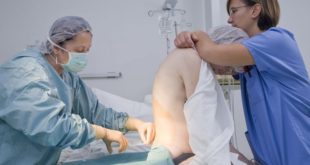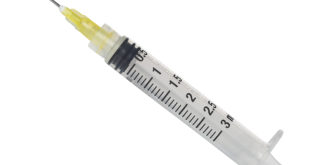Many folks have questions about strokes (or cerebrovascular accidents) as it relates to undergoing surgery and anesthesia. Perhaps they have suffered a stroke in the past and are now concerned about having anesthesia. Or maybe they are just concerned about the effects of anesthesia on the brain and naturally start thinking about strokes.
In this article, we are going to focus on perioperative strokes (those surrounding the time of surgery) in patients having non-cardiac, non-neurologic surgery.
Let me add that the research is nowhere near complete on this topic. And though we are starting to get some data to better understand this phenomena, there is still much research left to be done.
Let’s start out with a few definitions to help us better understand the topic.
A stroke, or cerebrovascular accident (CVA), occurs when the blood supply to a part of the brain is interrupted or significantly reduced. This limits or prevents that part of the brain from receiving the oxygen and nutrients it needs.
Definitions
A stroke is defined as a focal or global neurologic deficit of cerebrovascular cause that persists beyond 24 hours or is interrupted by death within 24 hours.
A Transient Ischemic Attack (TIA) is an acute loss of focal cerebral or ocular function with symptoms lasting less than 24 hours. These symptoms are usually presumed to be embolic or thrombotic in nature. Sometimes TIA’s are called “ministrokes”.
Types of Stroke
Ischemic Stroke: This type of stroke occurs when the arteries of the brain become narrowed or blocked. This causes blood flow to be greatly limited or stopped beyond the area of the blockage. There are two types of ischemic stroke.
- Embolic Stroke: This type of stroke occurs when a blood clot forms in another part of the body, dislodges, and travels through the bloodstream until it “gets stuck” in a narrower artery in the brain. Two potential areas of clot formation are the heart and/or the carotid artery in the neck.
- Thrombotic Stroke: This type of stroke occurs when an actual clot (or thrombus) forms in one of the arteries of the brain.
Hemorrhagic Stroke: This type of stroke occurs when a blood vessel in the brain leaks or ruptures. Risk factors for this include uncontrolled high blood pressure and brain aneurysms (“bulges” in blood vessels due to weaknesses in the wall of the vessel). The leaking blood can damage the brain cells in the areas that it spills into. And the areas of the brain that no longer are receiving the oxygen and nutrients it needs will also be affected.
We are now going to focus back onto strokes surrounding surgery. And we are going to get even more specific than that. Because cardiac and neurological surgery are special cases, we will be examining non-cardiac, non-neurologic surgery.
The incidence of stroke surrounding surgery in these types of cases is: 0.05 – 7%.
What are the risk factors? They include the following:
- Advanced Age
- History of Previous Stroke
- History of Atrial Fibrillation
- History of Vascular Disease
- History of Metabolic Disease
For some reason, the outcomes of perioperative strokes are devastating. For comparison, the mortality rate of non-surgical strokes is 12.6%. For strokes related to the surgical setting, the rates range from 26% for those with no previous history of stroke to 87% for those with a history of a previous stroke.
The thought is that the culprit is inflammation in multiple phases of stroke pathology. The acute systemic inflammatory response that typically occurs with surgery (stress response of surgery) may exacerbate the local inflammatory events that occur during a stroke.
Most strokes in non-cardiac, non-neurological surgery are thrombotic in nature. About 68% are thrombotic, with another 16% being embolic.
We aren’t sure why there are more thrombotic strokes with surgery, but we believe it may be related to endothelial dysfunction. The endothelium is the layer of cells that lines the inside of blood vessels. There is some thought that general anesthesia may affect endothelial function. Also, if patients are on antiplatelet meds or other types of blood thinning medication, these often have to be interrupted to minimize the risk of bleeding during surgery.
The theory is that all these factors may contribute to chances of thrombotic strokes surrounding these types of surgery: endothelial dysfunction, possibly worsened by the “stress response of surgery” and by general anesthesia, and the inability to use blood thinning medications, all factor into the chance of a thrombotic stroke during or immediately after surgery.
So how long should we wait to have elective surgery following a stroke?
An acute stroke impairs cerebral autoregulation. Think of this as the body’s way to automatically control cerebral blood flow across a range of blood pressures. An injured brain (from thrombotic stroke) cannot do this well and becomes more vulnerable to changes in blood pressure (especially low blood pressure).
So the idea is to delay elective surgery long enough to allow this autoregulation to recover and to allow that acute inflammatory response to go away. Usually this means a delay of non-urgent surgery for about 1 to 3 months.
I hope this helps shed some light on this topic. Now it’s your turn.
Please ask any questions you have in the comments section below.
And feel free to share any experiences as well.
Dr. Dave
 Anesthesia Myths: Get the Facts, Lose the Fear | Your #1 Anesthesia Resource in Simple language
Anesthesia Myths: Get the Facts, Lose the Fear | Your #1 Anesthesia Resource in Simple language




